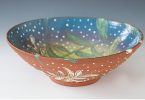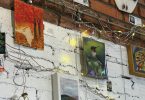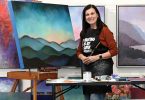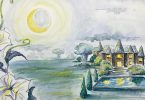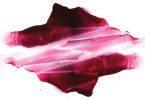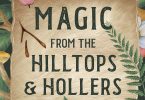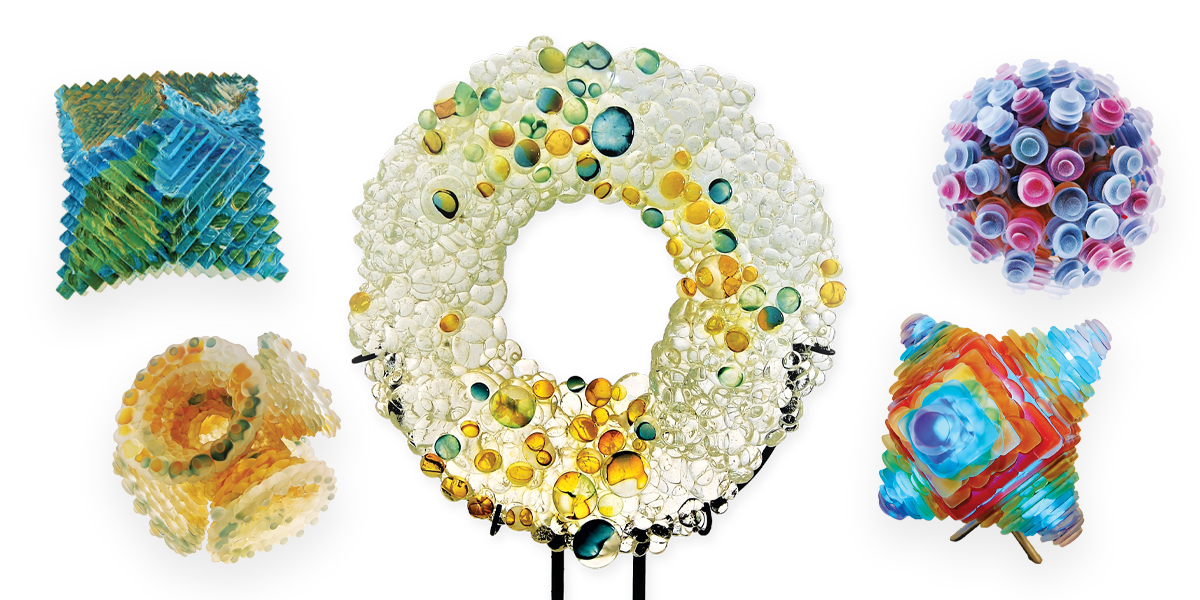
(Clockwise from upper left) Pangaea; Life Particles; Super-Nova Mama; Light at the End of the Tunnel; and Tunnel. Fred Mead, artist
By Gina Malone
Glass artist Fred Mead exemplifies the artist on whom, as writer Henry James put it, “nothing is lost.” Mead grew up in Michigan with parents who worked at General Motors. “My father was an industrial designer and my crafty mother worked in the blueprint department,” says Mead. Many of the clothes, furniture and household goods in their home were made or made over. “There was no such thing as woman’s work or man’s work in our house,” he says. “Everybody did everything. It was a kind of mini-farm before we called them that. I would say—contrary to what many teens exclaim, ‘When will I ever use this useless information?’—that I ended up using everything I ever learned later in life.”
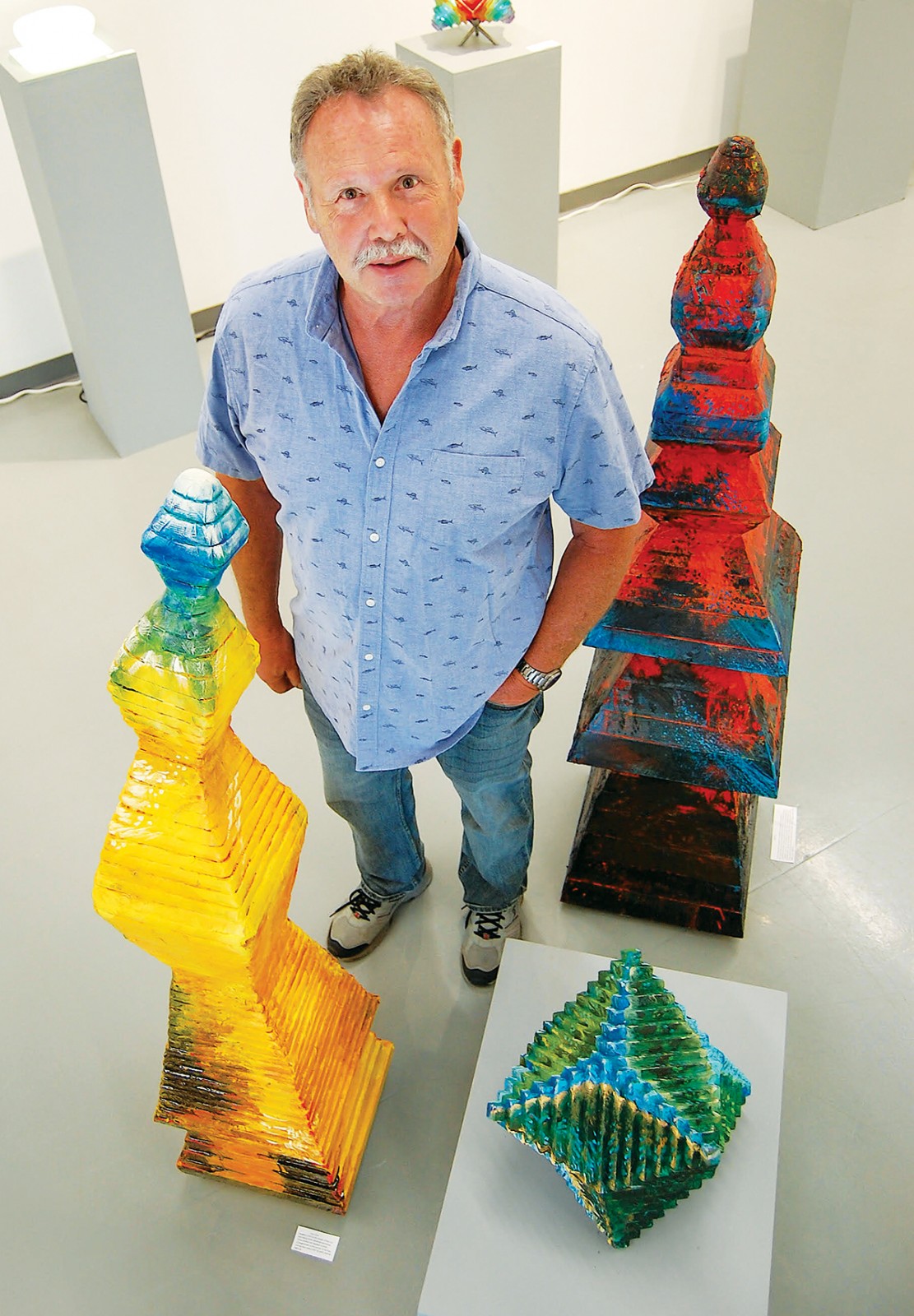
Fred Mead, artist
Creativity was everywhere around him, Mead recalls. His parents would bring home leftover blueprint paper for him to draw on. “I marveled at all of the sharply pointed pencils and the rulers on my father’s drawing table and wanted to draw things like him,” he says. At 12, his father taught him to build model airplanes. “I guess I have always been interested in so many things in life and in making things,” says Mead. “I spent hours frolicking through the woods, building treehouses, fishing, rock hunting and investigating the frozen creeks and ponds.”
When he was 18, Mead discovered meditation. “I find that in meditation I can overcome anxiety and let my mind relax and create,” he says. “I believe that one’s mind is a key connection to the Universe. Meditation has helped me to imagine and sometimes plan glass sculptures.”
He was working in commercial art and maintaining an art studio on the side when his father passed away. “I became disillusioned with just doing commercial art for my 9 to 5 and quit my job and, after a combination of situations, ended up, as they say, losing everything,” Mead says. “After a bunch of soul searching and jobs during a year, I started to work in a halfway house and something really clicked for me there and I felt the work was important and meaningful,” he says. His college degree helped him obtain a position working with troubled children in a special school. “I went on to work in a detox unit and a partial hospitalization unit and gained further training and experience. I eventually became the acting program coordinator at a place that helps persons with mental illness called Adventure House in Shelby. Ironically, they use work as a rehabilitation tool in their program, so I was right at home.” During that time, he lost his wife of 24 years, who had always been supportive of his art.
Ten years later, he remarried, retired after 30 years with Adventure House and took classes at Penland School of Craft and Corning Museum of Glass.
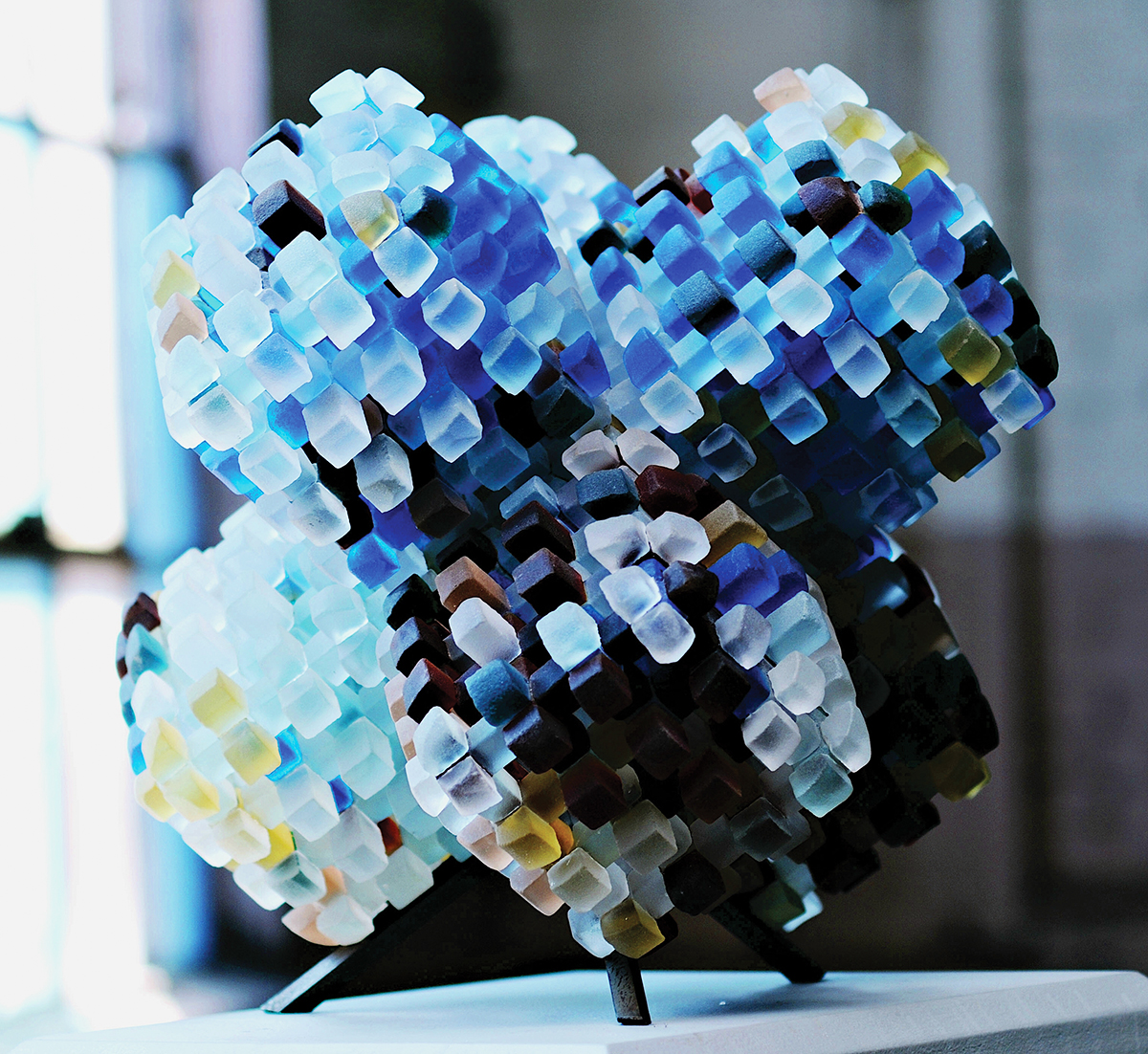
Human Element. Fred Mead, artist
“Throughout all those years, I made a lot of glass works,” Mead says. “My dad always said, ‘Shoot for the stars’ in your life. After his passing, I started literally making stars out of glass. I was so poor at first that all of my glass came from hardware stores’ throwaway window cutoffs and from frame shops. I was recycling out of need for material and doing stacked-glass sculptures and home accessories.” He says that he eventually overcame a shy reluctance to approach gallery owners and, consequently, had his work accepted by about 20 galleries. He established Meadart, his enterprise making functional pieces including cake plates, candelabras, coasters and even glass tables.
He also completes about ten sculptures a year, with some of them having been a couple of years in the making. “My sculptures mostly use a technique I modified from a Corning studio class with Sidney Hutter,” he says. “The glass is hot fused, ground and constructed with colored adhesives mixing; it is like painting with glass.”
Mead says that he contemplates a lot of things that people generally don’t think about, including time and outer space. “I think about how everything is miraculously put together after being compressed into an area smaller than the head of a pin and then exploded with a Big Bang to collect into the life that we have now in the universe,” he says. A collaborative work with Zack Smith Johnson, Home, is a 26’ tall glass and steel piece that depicts Earth as an astronaut might view it from space. It will be located in the WNC Sculpture Center in Lenoir.
To learn more visit, FredMead.com and FredMeadBlogspot.com. Mead’s work is available at numerous regional galleries, including The Lucy Clark Gallery in Brevard, Seven Sisters Craft Gallery in Black Mountain, Carlton Gallery in Banner Elk and Banfield Gallery in Forest City.

